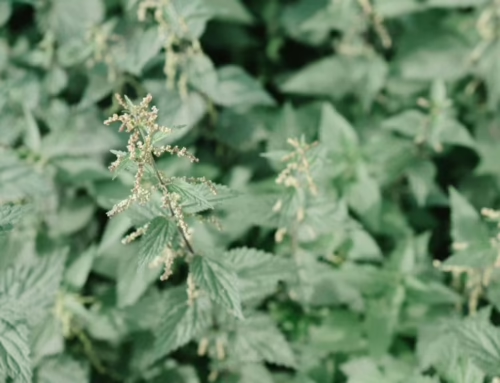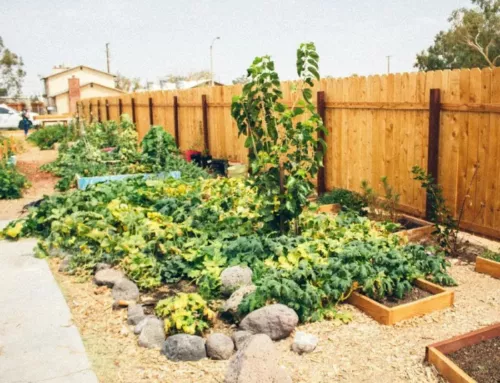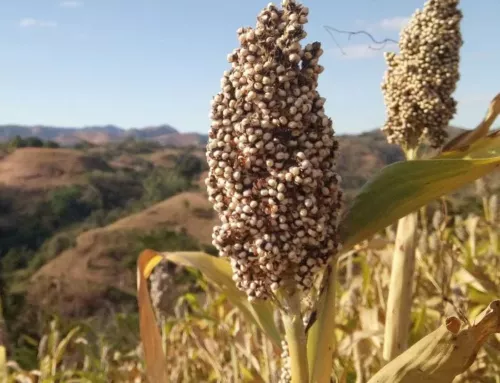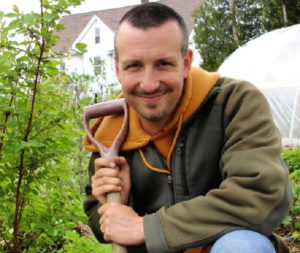 Excerpt by Eric Toensmeier, Introductory text by Caro Roszell
Excerpt by Eric Toensmeier, Introductory text by Caro Roszell
Small farmers have been at the heart of food systems resilience throughout the most disrupted times of the pandemic here in the Northeast in 2020, in many cases redesigning their entire wash, pack, and distribution systems to meet an unprecedented rise in demand for local foods. This work was all the more heroic because it was also a year in which a serious drought taxed production and increased costs. Between labor and distribution challenges, unusually dry weather, and a range of supply chain challenges, 2020 was a deeply taxing year that was deeply unsustainable for the people we depend on for our food.
It is now undeniable that local communities depend more on their localized food production systems in times of crisis—yet we can also safely project that climate change actively undermines the ability of farmers to make crop plans that minimize their own risk and costs.
While there are social and economic structures that bear on this design flaw in our food system, there is also the agroecological question of annual agriculture itself to consider: what we grow, and how. All over the world, smallholder farmers in more extreme climates use perennials in innovative ways to design for adaptability: to stabilize soils, provide food source and nutrient diversity, create healthy environments that cycle human and livestock nutrients, to stabilize microclimates and to distribute yields and production costs across time.
To address the theme of our 2021 NOFA/Mass Winter Conference, Food Security for the Common Wealth, we have asked our 2021 Winter Conference keynote speaker, Eric Toensmeier, author of The Carbon Farming Solution to share how perennialization can help us to build greater resilience into our local food systems. In advance of his talk, he sent us an excerpt from his book to sow new ideas into our approach to land stewardship and food production in the new year.
We hope you enjoy the excerpt below, and you can find out how to buy his book by scrolling to the end.
Register for the conference online here and get access to over 28 workshops, keynotes, raffles and more on the weekend of January 8-10, 2021. Huge thanks to Eric Toensmeier for this contribution to our newsletter. We are looking forward to hosting him at the conference in January. Please enjoy!
Preview from 2021 Winter Conference Keynote Speaker Eric Toensmeier
This excerpt is from Eric Toensmeier’s book The Carbon Farming Solution: A Global Toolkit of Perennial Crops, and Regenerative Agriculture Practices for climate change Mitigation and Food Security (Chelsea Green Publishing, 2016) and is reprinted with permission from the publisher.
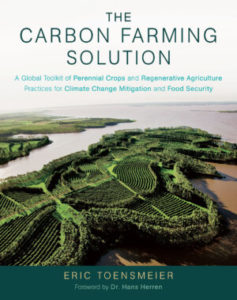
Perennial Cropping Systems
Perennial crops are grown on at least 153 million hectares (378 million acres), 11 percent of world crop- land. Their carbon sequestration rates range from very low to extremely high. Perennial replacements are available for staple crops in some climates, with others under development. Perennial sources of mate- rials, chemicals, and energy are also available. These cropping systems include both herbaceous and woody perennials, and both monocultures and mixed-species systems. Along with intensive silvopasture, these represent the highest levels of carbon of any food production system.
Herbaceous perennials tend to sequester less carbon than woody plants, at very low to high rates. Bananas and biomass grasses demonstrate high rates of sequestration, while others are far lower. More data is needed on the potential impact of herbaceous perennials.
Woody perennial crops such as fruits and nuts are powerful sequesterers of carbon, with most rated medium to very high. Bamboos sequester carbon at high to extremely high rates. Coppiced woody plants have low to very high rates. Soil carbon stocks in woody bio- mass systems are large at an estimated 140 tons/ha.
Multistrata agroforestry systems feature multiple perennial crops, often growing in layers, with shrubs and small trees growing under a canopy of tall timber or crop trees. These systems sequester carbon at medium to extremely high rates. In multistrata systems, the majority of carbon is sequestered by the woody overstory. Within the understory, shrubs sequester more than herbs and grasses. Lifetime soil carbon accumulation in these systems is very large at an estimated 300 t/ha.
Generally speaking, agroforestry systems sequester less carbon than natural forest, but long-term agroforestry systems can sequester equal or higher amounts of carbon than adjacent natural forests. This is likely due to factors such as the high proportion of nitrogen-fixing trees, the presence of livestock manure, and the active participation of human managers.
Variables in Carbon Sequestration Rates
The challenge in understanding and assessing all these tools is that there is a huge variation in the carbon sequestration potential of various practices, as well as variation within the same practices, depending on other important factors such as climate and soil type. For example, differences in regional climate affect carbon sequestration in both natural and agricultural systems. Temperate-climate systems generally sequester less carbon in aboveground biomass annually than tropical-climate systems. Instead they store it belowground, where organic matter breaks down more slowly in colder climates, giving these regions more potential for soil carbon storage compared with the tropics.
…
Deciduous and semi-evergreen trees compete less for light with understory crops and may therefore allow a higher density of trees with higher carbon capture as a result. Species with higher root densities are more effective, and trees sequester more carbon than shallow-rooted warm-season grasses. Combining cool-season and warm-season plants (and other types of resource partitioning among plants) increases carbon sequestration.
Comparisons of soil carbon consistently find 20 to 100 percent more carbon in soils under nitrogen-fixing plants. On the other hand, nitrogen-fixing plants give off extremely potent greenhouse gases such as nitrous oxide; scientists have not reached conclusions about how significant this is yet. There is no evidence that native species, as a class, sequester more or less carbon than non-native species in any given region. Different cultivars within a species can vary in carbon sequestration potential.
Design and management can also affect carbon sequestration in complex ways. Design issues such as density of trees and species selection, and management practices such as timing and type of pruning, tree life span, and harvesting, all can have positive and negative impacts. Burning wood on the forest floor after timber harvest releases carbon but can also lead to long-term increases in soil carbon in some cases. Emissions from activities such as the use of machinery and water pumps can counteract gains from tree planting.
Managed bamboo forests sequester more carbon than natural bamboo forests. This is because harvesting stimulates more growth, and treatment of harvested culms allows for long-term sequestration in bamboo products. One general trend is that natural forests sequester the most carbon, followed by multistrata systems, followed by tree plantations, followed by annual agriculture. The more diversity, higher density, and longer life span of trees, the more carbon is sequestered.
If forest is cleared for agroforestry systems (or for new plantations), there is a net loss of carbon to the atmosphere. When planted on farmland, degraded land, or other treeless areas, agroforestry and reforestation are net gains for sequestration. Management with fire can actually increase biomass and soil carbon by stimulating vigorous plant growth.
Global Estimates of Agricultural Carbon Sequestration Potential
So can carbon farming alone solve our climate change problem? Not even close. Carbon farming doesn’t work without dramatic emissions reductions (including clean energy and reduced consumption in wealthy countries), as even a small fraction of the remaining 5 to 10 trillion tons of carbon in the fossil pool would far overwhelm the theoretical maximum sequestration capacity of soils and biomass, estimated at 320 billion tons. Emissions reduction also doesn’t work without carbon farming since even if emissions stop today, we’re already over the tipping point with no way to return without sequestration. These strategies are two halves of a whole, and each cannot succeed without the other.
Of the 200-plus billion tons of carbon that must be sequestered, how much can come through agriculture? These calculations are outside the scope of this book, although I am currently developing such scenarios with Project Drawdown. (Making such calculations is complex for many reasons. One is double accounting, in which the same practice is counted more than once. For example, the same land may be included under grazing, silvopasture, and/or forestry, depending on who is counting. Other farms may fall through the cracks and not be counted at all for similar reasons.) Scientists have come up with various proposals, some of which are quite hopeful. The challenge lies in scaling up these practices to a global scale, which we will discuss in part 5.
This is where the second half of the carbon farming definition comes in—the need to remunerate farmers for their carbon sequestration work. Studies have shown that the more incentives are available for farmers, the more carbon they can draw down. One way farmers can be paid for sequestration is through carbon offsets. (Prices for “carbon” actually reflect carbon dioxide and should be read as such throughout this book.) In this model, the amount of money received by farmers for their mitigation impact depends on the price of carbon dioxide in international markets. (I explain my distaste for carbon offsets in the introduction and chapters 27 and 28. Nonetheless it is of interest here to point out that higher payments to farmers result in higher levels of mitigation.)
The IPCC has developed several scenarios to predict the impact of agricultural mitigation, assuming different prices on carbon. The higher the price on carbon, the more money gets to farmers (in theory). The IPCC’s most optimistic scenario assumes a carbon price of $100/ton US of carbon dioxide equivalent. Under this scenario they estimate global sequestration of 81 million to 1.2 billion tons annually by 2030. As the price of carbon drops to $50 and $20, the mitigation impact of carbon farming also drops dramatically.
Rattan Lal of the Ohio State University Carbon Management and Sequestration Center estimates that with global adoption of conservation agriculture, world cropland could sequester 400 million to 1.2 billion tons of carbon annually over a period of 50 to 100 years. He equates this with a drawdown of 50ppm of carbon dioxide, although by then we are likely to need far more than that to return to 350ppm. Grasslands alone could sequester 54 to 216 million tons annually by 2030 according to the IPCC. This assumes a price on carbon of $20 to $50/ton US.
An impressive study reviewing the global potential of multiple practices estimated a theoretical capacity of 1.5 to 1.6 billion tons per year. The authors did not think this would be achieved and estimated 409 to 436 million, 681 to 736 million, and 1.0 to 1.2 billion tons respectively at carbon prices of $20, $50, and $100/ton US. Reviewing these scenarios it is clear that financing is necessary to achieve high impact. Whether this comes through a price on carbon or through the many other options remains to be seen. We’ll discuss financing carbon farming in chapter 27.
It is also noteworthy that few of these studies consider much impact for agroforestry. For example, the IPCC scenario includes virtually no agroforestry, and no mention at all of perennial crops. What scenarios have been run to determine the potential of agroforestry and perennial crops? The World Agroforestry Centre estimates that 900 million hectares (2.2 billion acres) are suitable for conversion to agroforestry. Their sequestration rate estimate was 2 to 50t/ha lifetime. This gives the wide range of 1.8 million to 135 billion tons. (Both the IPCC and World Agroforestry Centre are looking primarily at tropical climates in these estimates, although agroforestry is practiced in temperate climates as well.)
In the absence of published estimates on conversion to woody staple crops, I’ve developed a sketch of a scenario to show their impressive sequestration capacity. There are many tropical woody staples that yield as well as annuals, and for purposes of this exercise we’ll assume equivalent yields. Annual staples are grown on about 789 million hectares in the tropics. Let’s assume a conservative 5 t/ha/yr sequestration rate (some tree staples exceed 20 t/ha/yr). What if 10 percent of tropical annual staple cropland was converted to perennials? I’ll assume this is primarily to feed livestock to avoid the need for market development. This scenario sequesters 394 million tons of carbon annually. Forest and timber trees typically continue to sequester for 25 to 50 years, so let’s go with a conservative 25 years for our smaller food trees. During that period, our 78.9 million hectares of staples (10% of total) would sequester 10.2 billion tons of carbon—equivalent to a reduction of 5 parts per million of atmospheric carbon dioxide.
What are the prospects for shifting a sizable percentage of staple crop production to perennials? To answer this we must know more about these crops.
To learn more about perennial crops with commercial potential for the Northeast, and their role in climate resilience, please register for the NOFA/Mass Winter Conference and tune in for Eric’s Keynote address.
Eric Toensmeier is the award-winning author of Paradise Lot, Perennial Vegetables, and The Carbon Farming Solution, and the co-author of Edible Forest Gardens. Eric is an appointed lecturer at Yale University, a Senior Fellow with Project Drawdown, and an international trainer. He presents in English and Spanish throughout the United States, Canada, Mexico, Guatemala, and the Caribbean. Eric has studied useful perennial plants and their roles in agroforestry systems for over two decades, and cultivates about 300 species in his urban garden. His writing can be viewed online at perennialsolutions.org.

